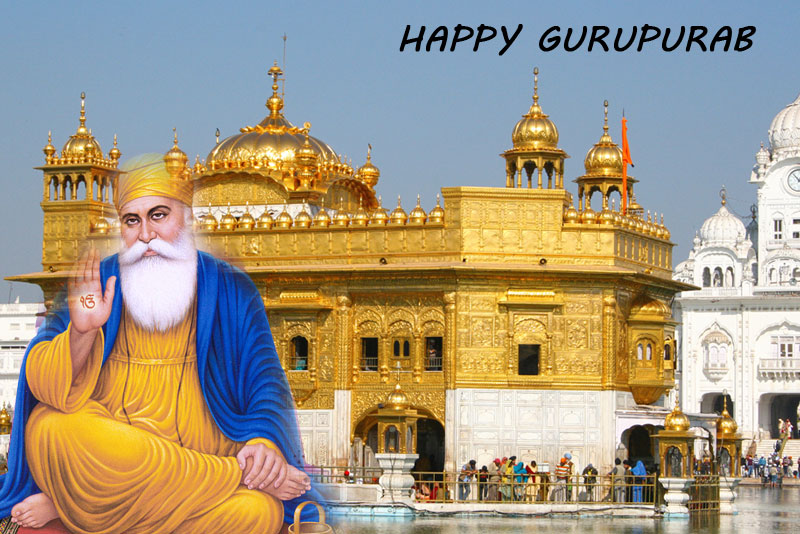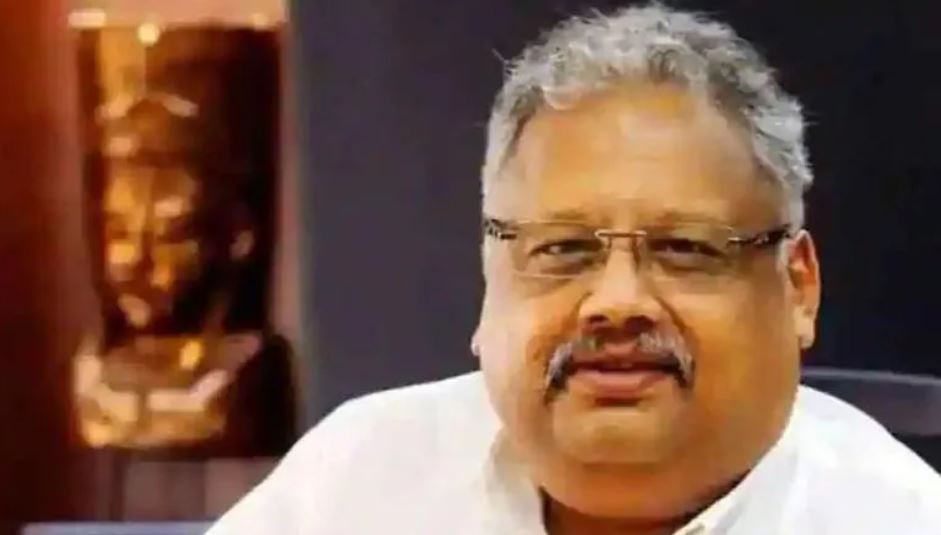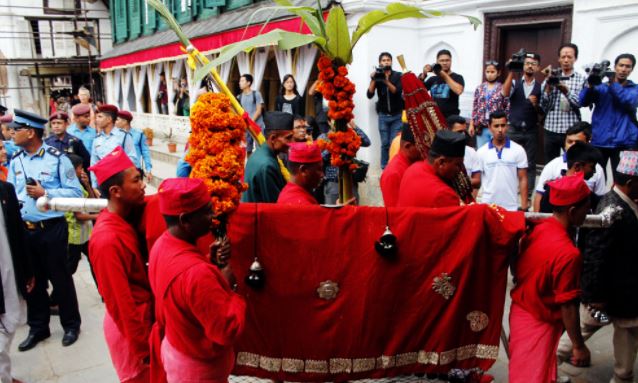Table of Contents
Even Kings and emperors with heaps of wealth and vast dominion cannot compare with an ant filled with the love of God.
Gurpurab-Biggest festival of Sikhs
Sikhism is generally considered as the youngest religion in the world with Punjab as the homeland of its followers, the Sikhs.
Gurpurab or Guruparv is the biggest festival of Sikhs which celebrates the birth of Guru Nanak Dev Ji (1469–1539), the founder of the Sikh Religion. He was born on 20 October 1469, to Bhai Kalu Mehta (1440-1522) and Mata Tripta,in Rai-Bhoi-di Talwandi of Pakistan, now Nankana Sahib.
The festival is also known as Guru Nanak’s Prakash Utsav of Guru Nanak Birthday. Not only Sikhs but people of all the religions celebrate this festival along with Sikhs.
How do we Celebrate Guru Nanak Dev Ji Birthday?
Akhand Path (non-stop reading of Guru Granth Sahib Ji for 48 hours) is performed in all the Gurudwaras. In the early hours of the anniversary day, people sing Asar-di-Var (hymns) which is followed by a Katha and recitation of rhymes, stories or lectures in the name of god.
The Gurupurab is almost similar to other Sikh festivals with the difference in the hymes only and begins with the Prabhat pheri in wee hours. In Prabhat Pheris, the devotees wake up, gather and sing hymns.
Langars (community lunches) are arranged in Gurudwaras, feeding free food to all the people. The free lunch is given to the people of all the communities, irrespective of the caste, language, status etc. The festival is a synonym of equality and love among masses.
How Many Sikh Gurus are in Sikhism?
There have been 10 Sikh Gurus, all graced with divine energies and spirituality worked really hard from 1469 to 1708 – that is, over a period of 239 years for the shaping, raising and enlightenment of the Sikh community and humanity.
550th Anniversary Celebrations of Guru Nanak Dev Ji
- Punjab CM invites PM Modi and President Ram Nath Kovind to attend the 550th birth Prakash Parab celebration
- Delhi – Ludhiana ‘ Sarbat Da Bhalla’ Express Train launched as a Tribute to Guru Nanak Devji
- Nepal Launches a commemorative coin to mark the 550th anniversary of Guru Nanak
- 500 plus Sikh pilgrims have crossed over to Pakistan at Kartarpur corridor for the celebration.
- November 9, Prime Minister Narendra Modi and his Pakistani counterpart Imran Khan inaugurated the Kartarpur corridor at Gurdaspur and Kartarpur respectively, facilitating the visa-free travel of Indian pilgrims to Kartarpur Sahib, which is the last resting place of Guru Nanak Dev.
- Kartarpur Corridor links Gurdwara Darbar Sahib in Pakistan, the final resting place of Guru Nanak Dev, to Dera Baba Nanak shrine in Punjab’s Gurdaspur.
- National Highway between India-Pak has been renamed Sri Guru Nanak dev ji Marg.
Know all 10 Sikh Gurus
-
First Guru: Guru Nanak Dev, Guru(1496-1539)
He laid the foundation of Sikhism with a philosophy based on:
-
Kirat Karo: earn an honest, pure, and dedicated living by exercising God-given skills and labour for the improvement of society
- Vand Shako: share what you have with those less fortunate in society. The Langar or free community kitchen is a hallmark of the Sikh faith, initiated by Guru Nanak Dev Ji, around the year of 1481. Nanak Ji preaches and promoted Sacha Sauda or “True business” by feeding the hungry people.
-
Naam Japo: do all of this with the mind focused on God to the extent that you become a part of the creator and you see God in all creation, living or inanimate.
Nanak Dev Ji founded and ascended to his heavenly abode in Kartarpur, now in Pakistan, only about 2Km from the Indo-Pak border situated on the right bank of river Ravi.
-
-
Second Guru: Guru Angad Dev(1539-1552)
Guru Angad Dev was born in 1504. Sikhism has always emphasized the significance of physical fitness, consumption of tobacco and alcohol in any form is forbidden in the religion.Guru Angad Dev took a keen interest in sports and wrestling. He had Mal-Akharas (sports ground) in his compound and encouraged the disciples to participate in exercises after the morning prayers.Guru Angad invented and introduced the Gurmukhi (written form of Punjabi) and wrote the first biography of Guru Nanak Sahib.
-
Third Guru: Guru Amar Das Sahib Ji, Guru(1552- 1574)
Guru Amar Das Sahib was born in 1479 and became Guru at the age of 73, following the footsteps of Sri Guru Angad Dev Sahib Ji, who left for his heavenly abode on, aged 48. Bhai Amardas Ji was Vaishanavite Hindu by birth but changed his religion under influence of second Sikh guru. Guru Amardas introduced the Anand Karaj marriage ceremony for the Sikhs, replacing the Hindu form. -
Fourth Guru: Sri Guru Ram Das Ji, Guru(1574- 1581)
Guru Ram Das Ji was born in 1534 with the birth name Jetha. Bhai Jetha was orphaned at the age of 7 and met the third Sikh guru, Guru Amar Das Sahib Ji, at age of 12.
Guruji founded the city of Amritsar and laid the foundation of renowned Golden Temple at Amritsar, the holy city of the Sikhs. He requested the Muslim Sufi, Mian Mir to lay the cornerstone of the Harmandir Sahib. Complete construction of Golden temple was accomplished by his third son and fifth Sikh guru, Guru Arjan Dev. -
Fifth Guru: Guru Arjan Dev, Guru(1581- 1606)
Guru Arjan Dev was born in 1563. He was the third son of forth Sikh guru, Guru Ram Das Ji. He compiled the motivational verses (Shabads) of all prior Gurus and several saints of the Indian Subcontinent including those from Hindu, Muslim and Sikh backgrounds into the Holy Scripture, the Adi Granth and wrote the Sukhmani Sahib.
The revered scripture not only provides religious, motivational and spiritual knowledge but it serves as an armamentarium of a holistic approach toward health and lifestyle-related diseases. Guru Ji became the first great martyr in Sikh history when Emperor Jahangir ordered his execution. -
Sixth Guru: Guru Hargobind, Guru(1606- 1644)
Guru Hargobind was the son of Guru Arjan Dev, born in 1595. He was known as a “soldier saint.Guruji was first of the Gurus to take up arms to defend the faith. At the age of 13, Guru Hargobind erected Sri Akal Takhat Sahib, ten feet above the ground and adorned two swords, Miri and Piri, representing temporal and spiritual power.
As per Guru Hargobind, Sikh must be a Saint Soldier who must work on their spiritual upliftment and physical fitness to meet mind-body-soul coordination to stand up for righteousness and humanity. -
Seventh Guru: Guru Har Rai Ji, Guru(1644- 1661)
Born in 1630, Guru Har Rai Dev followed the footsteps of his grandfather, Guru Har Gobind Ji. Before Guru Ji died, he nominated Guru Har Krishan Ji, his son, as the next Guru of the Sikhs. -
Eighth Guru: Guru Har Krishan, Guru(1661-1664)
Born in 1651 Guru Har Krishan was made Guru at the tender age of five years only, honoured as Bala Pir (child prophet) based on his humanitarian deeds. -
Ninth Guru: Guru Tegh Bahadur, Guru(1665-1695)
Guru Tegh Bahadur was born in 1621 in Amritsar. Guru Tegh Bahadur established the town of Anandpur. Guru Gobind Singh Ji was also known as Kalyanwale pathshah.The Guru laid down his life for the protection of the Hindu religion, their Tilak (devotional forehead markings) and their sacred (Juneau) thread. He was a firm believer in the right of people to the freedom of worship.Because of his refusal to convert to Islam a threatened forced conversion of the Hindus of Kashmir was thwarted. -
Tenth Guru: Guru Gobind Singh, Guru (1675- 1708)
The tenth guru was the son of Guru Teg Bahadur, born in 1666. Guru Govind Singh added teachings of the ninth Guru, Guru Tegh Bahadur and bestowed the Scripture, Sri Guru Granth Sahib, Guruship for eternity. This day is celebrated today as Guru Gadi Divas (Enthronement Day).He commanded: “Let all bow before my successor, Guru Granth.
The Word is the Guru now.Guru Govind Ji formed Khalsa group (1699), the “Warrior community” of Sikh religion. He gave the Sikhs the name Singh (lion) or Kaur (princess).The festival of Hola Mohalla started by Guru Gobind Singh, celebrated on the second day of the lunar month, is an occasion to demonstrate daring physical feats such as gatka, horse riding, swordsmanship, and tent pegging. Gatka is the dynamic Punjabi martial art of mock battles.
The gatkabaj is expected to be ambidextrous in handling various weapons while ensuring nimble footwork and tactical body positioning. After he had lost his father, his mother and four sons to Mughal tyranny, he wrote his famous letter (the zafarnama) to Aurangzeb, after which the attacks against the Guru and his Sikhs were called off.
Aurangzeb died soon after reading the letter. Pathan assassins of Wasir Khan, inflicted the wound causing the Guru’s death.
Source
http://www.sikhiwiki.org/index.php/Ten_Sikh_Gurus
Also Read:
GuruPurab Biggest Sikh Festival – Guru Nanak Ji Birthday
Martyrdom of Ninth Guru of Sikh Tegh Bahadur-Supreme Sacrifice
Guru Gobind Singh-Tenth Sikh Guru





